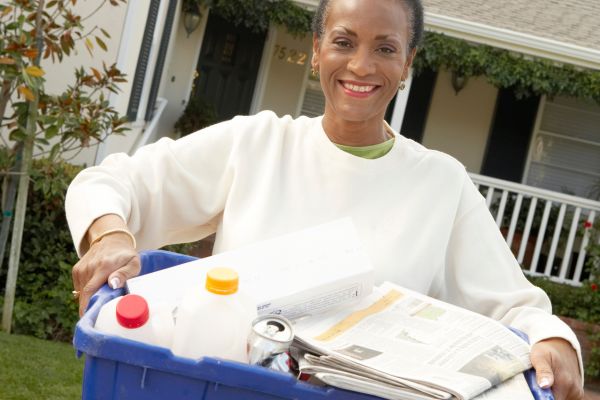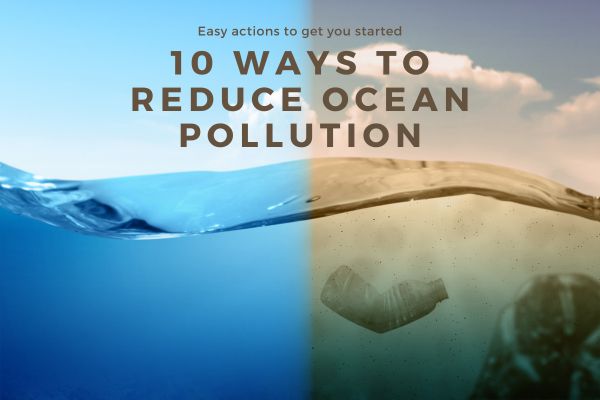Plastic pollution in the world’s oceans has reached alarming levels, posing a serious threat to marine ecosystems, wildlife, and human health. Plastics not only take hundreds of years to break down but also release toxic chemicals, making this issue urgent and pressing. The good news is that there are practical steps we can take to combat plastic pollution and protect our oceans. In this article, we’ll explore the top 10 Ways to Reduce Plastic Pollution in the Ocean, each with a clear action you can take to start having an impact.
The Best Way to Stop Plastic Pollution In the Ocean
1. Reduce Single-Use Plastics
One of the most significant contributors to plastic pollution in the ocean is single-use plastics like straws, plastic bags, utensils, coffee cups, and water bottles. By reducing our reliance on these items, we can decrease the amount of plastic waste with the potential to enter the ocean.
ACTION
To minimize single-use plastic consumption, try some of the following
- replacing disposable plastic water bottles with a reusable stainless steel or glass bottle. Click the link for $5 off your purchase.
- bringing reusable bags to grocery stores
- Swapping disposable plastic straws with bamboo or stainless steel straws or even opting to forgo straws altogether
- Investing in a reusable coffee cup
- Carrying reusable utensils
2. Recycle Properly
Efficient recycling plays a crucial role in preventing plastic from ending up in the ocean. Make sure you’re recycling according to your local guidelines, and pay attention to which plastics are accepted. Learn more about recycling plastics.
ACTION
Learn how to recycle plastics by taking our Curbside Recycling Challenge.

3. Participate in River and Beach Cleanups
Rivers and beaches are significant contributors to ocean plastic pollution, as they transport plastic waste from inland areas to the sea. Participating in or organizing cleanups is an immediate and tangible way to combat plastic pollution.
Beach and river cleanups are not only practical but also educational, as they raise awareness about the issue. They target trash before it has a chance to travel to the ocean or disintegrate into harmful microplastics.
ACTION
Volunteer for a beach cleanup or organize one yourself.
Check your local community groups for cleanups near you or other volunteer sites. Organizations like Surfrider Foundation and Ocean Conservancy regularly organize beach cleanup initiatives, so join in and make a difference in your local community.
4. Buy Recycled Products
By diverting waste materials from landfills and incorporating them into the production of new products, the need to extract and process virgin resources diminishes. This, in turn, helps to mitigate environmental impacs, decrease energy consumption, and alleviate the strain on ecosystems.
Opting for recycled products also aligns with the global commitment to reducing carbon emissions and combating climate change. The manufacturing of products from recycled materials typically involves lower energy consumption and emits fewer greenhouse gases compared to the production of virgin materials.
Plus, supporting the recycled product market encourages a circular economy and helps make recycling work.
ACTION
By supporting businesses and initiatives that use recycled materials, you can help create a demand for recycled plastics, which helps reduce overall plastic pollution. When you need to buy something new, seek out products that have recycled content. You can find many great ideas in our Recycled Product Shopping Guides or through our Recycled Brand Directory.
5. Choose Sustainable and Recyclable Packaging
As consumers, we have the power to influence businesses through our purchasing choices. When you opt for products with sustainable packaging, you send a clear message to businesses that you value environmentally responsible practices.
An essential aspect of sustainable packaging is its recyclability. Products with packaging that can be easily recycled ensure that the materials used in the packaging can be repurposed into new products, reducing the demand for new plastic production. Check your local recycling rules and guidelines to ensure that you can dispose of packaging before making the decision to purchase the product.
Many companies are transitioning to more responsible packaging practices in response to consumer demand for sustainable options. By choosing these products you are supporting these actions and encouraging other brands to step up.
ACTION
Stay informed and consider the end of life for packaging before you purchase.
- Look for products that use less plastic and more eco-friendly materials or even recycled content.
- Seek out brands that strive for efficient designs that rule out unnecessary packaging, particularly plastics.
- Get familiar with what can be recycled in your local area and use this information to help you choose packaging you know you can recycle.
6. Minimize Microplastics
Microplastics, tiny plastic particles, are found throughout the oceans and can have devastating effects on marine life. There are two main types of microplastics, those that form as plastic breaks down in the environment and those small plastic particles that are intentionally released into the environment.
Microbeads are tiny plastic particles, often found in personal care products like exfoliating scrubs and toothpaste. These minuscule beads may seem harmless, but they have a detrimental impact on the environment as they are too small to be filtered out in wastewater treatment plants. Consequently, they enter water bodies, accumulating and posing threats to aquatic life and ecosystems.
By making informed consumer choices and advocating for change, you can contribute to the protection of our waterways and marine life.

ACTION
To help combat this issue, choose personal care products that explicitly state they are microbead-free, and support legislation that bans or regulates the use of microbeads in cosmetic and personal care items.
7. Join the Refillable Trend
Refillables play a significant role in helping us reduce our reliance on plastic packaging. By opting for refillable containers, we’re actively minimizing the amount of single-use plastic packaging that ends up in landfills and has a risk of ending up in our oceans. This simple choice contributes to a more sustainable lifestyle, reducing our overall environmental footprint.
Embracing refillables isn’t just a personal decision; it’s a small yet impactful step towards a cleaner and greener planet.
ACTION
Try replacing one or two items in your household with a refillable item.
The easiest place to start is with cleaning products. Many brands offer various refillable options that reduce plastic and have plant-based formulas that reduce nasty chemicals.
8. Support Ocean Cleanup Organisations
In addition to prevention, innovative cleanup technologies are being developed to remove existing plastic waste from the ocean. Projects like The Ocean Cleanup use passive systems to capture plastics, preventing further degradation and dispersal of microplastics. Supporting and investing in these technologies is essential for tackling the plastic pollution crisis.
By supporting these organizations, we contribute to the restoration and preservation of marine environments, helping to mitigate the devastating impact of pollution on marine animals and habitats.
ACTION
These dedicated non-profit organizations who are tackling the pressing issue of ocean plastic pollution rely heavily on donations and community support. So don’t be shy, let’s give them all the help they need.
Organizations include Oceana, Ocean Conservancy, The Ocean Cleanup, Take 3 for the Sea, 5 Gyres.
Read more about the best ocean charities.
9. Support Legislation to Reduce Plastic Waste
Legislation plays a pivotal role in addressing plastic pollution by providing a regulatory framework to mitigate the environmental impact. Effective laws can establish measures such as extended producer responsibility, encouraging manufacturers to manage the entire life cycle of their products.
Legislation can also facilitate the implementation of bans on certain single-use plastics, encouraging the development and use of more sustainable alternatives. Furthermore, legislative efforts can foster a culture of responsibility and environmental consciousness, shaping consumer behavior and industry practices toward a more sustainable and circular approach to plastic use and disposal.
ACTION
We can play a crucial role in reducing plastic pollution and its impact on the environment by supporting legislation that aims to reduce plastic waste. One effective way is to stay informed about proposed legislation related to plastic waste reduction at local, national, and international levels. You can express your support for such legislation by contacting your local representatives through letters, emails, or phone calls, emphasizing the importance of taking strong measures to address plastic pollution.
One example is the “Break Free From Plastic Pollution Act“, a piece of legislation introduced in the United States Congress to address the environmental challenges posed by plastic pollution.
If you’re not located in the US, then look for local community initiatives and environmental organizations that focus on plastic waste reduction.
10. Spread the Word and Encourage Others
Education is a powerful tool in the fight against plastic pollution. Raising awareness about the issue can inspire individuals, businesses, and communities to take action. Share information on social media, participate in plastic-free challenges, and engage in conversations about the impact of plastic pollution to encourage collective efforts to combat the problem.
ACTION
Tell everyone you know, shout it from the rooftops. share on social media.
Share our 10 actions so that we can really make a difference.

The Wrap
Plastic pollution in the ocean is a global crisis, but by taking proactive steps, we can make a significant difference. From reducing single-use plastics to advocating for legislative changes and supporting sustainable practices, each action contributes to the broader effort to combat plastic pollution.
By learning about the top 10 Ways to Reduce Plastic Pollution in the Ocean and taking action today, you can help protect the health of our oceans, preserve marine ecosystems, and safeguard the planet for future generations.

















